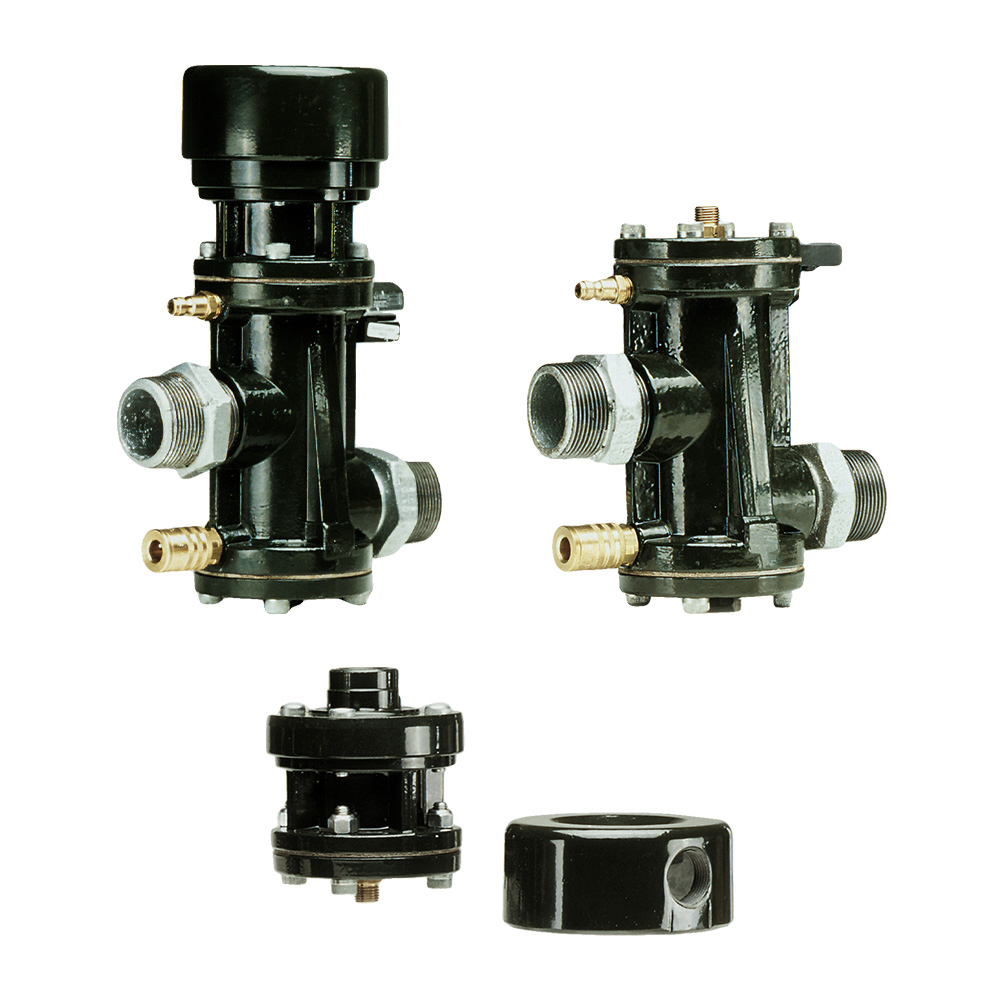Checking out the Capability of Modern Control Valves in Industrial Applications
Checking out the Capability of Modern Control Valves in Industrial Applications
Blog Article

Maximize Energy Cost Savings and Comfort With Advanced Building Automation Controls
In the world of contemporary design and center administration, the combination of advanced building automation regulates stands as a crucial development. The merging of innovation and sustainability has actually birthed a new era where energy performance, convenience optimization, and functional streamlining are no longer attainable realities however distant ambitions. By taking advantage of the power of automation, buildings can adjust, respond, and develop in methods that were when unimaginable. The possibility for considerable power financial savings and enhanced comfort is not just a promise but a possibility waiting to be fulfilled. This standard change in building management holds the crucial to unlocking a world where ecological conscientiousness and owner wellness sympathetically coexist within the walls of our frameworks.
Energy Effectiveness Perks
Energy efficiency benefits can substantially minimize power consumption and functional prices in structures. Energy-efficient systems, such as innovative structure automation controls, can optimize the use of resources like lighting, cooling, and heating, leading to reduced power expenditures over time.
Furthermore, boosted power effectiveness can lengthen the lifespan of building tools and systems. By operating more effectively, heating and cooling systems, light, and other building parts experience less deterioration, causing lowered upkeep and substitute expenses. Additionally, energy-efficient structures commonly command higher building values and rental rates, supplying lasting monetary advantages to proprietors.
Additionally, energy performance can enhance occupant comfort and performance. Correctly managed indoor atmospheres with optimum lighting and thermal problems produce an even more conducive and positive work space, bring about boosted employee satisfaction and performance. Overall, the power performance benefits connected with advanced building automation controls are multifaceted, including expense savings, environmental stewardship, and passenger wellness.
Improved Comfort Control
Enhancing convenience control in structure settings requires a sophisticated integration of advanced automation systems for optimum owner wellness. By using sophisticated structure automation controls, centers can tailor the indoor setting to satisfy the specific needs and choices of passengers. control valves.
By integrating these advanced controls, structures can not only enhance convenience yet likewise improve energy efficiency by maximizing system operations based on real occupancy and usage patterns. Ultimately, focusing on resident convenience with advanced automation systems leads to a more pleasurable and much healthier indoor setting.
Operational Efficiency Improvements

Moreover, the execution of real-time tracking and analytics devices enables building operators to determine power inefficiencies and functional abnormalities immediately. By continuously checking power usage patterns and system efficiency metrics, changes can be made in real-time to maximize energy consumption and make certain peak operational performance. control valves. Furthermore, incorporating need reaction approaches into structure automation controls can even more enhance functional performance by dynamically readjusting energy usage based on grid conditions and prices signals
Indoor Climate Optimization
Reliable interior environment optimization is a basic aspect of structure automation controls, ensuring residents' convenience and health while taking full advantage of power savings. By making here are the findings use of innovative sensing units and controls, developing automation systems can constantly keep track of and adjust temperature, humidity degrees, air high quality, and air flow to create an optimum indoor atmosphere. Preserving comfy and consistent conditions not just boosts owner satisfaction yet also increases efficiency and total well-being.
Indoor climate optimization additionally plays an important function in energy performance. By fine-tuning home heating, ventilation, and cooling systems based on real-time information and tenancy patterns, building automation controls can significantly reduce energy usage - control valves. Executing strategies such as demand-controlled ventilation and thermal zoning can help minimize power waste while ensuring that each location of the structure receives the necessary conditioning.

Sustainable Environment Creation
Building automation controls not only enhance interior environment conditions for energy effectiveness and resident comfort but also lay the foundation for creating a sustainable atmosphere with strategic management of systems and resources. By incorporating sophisticated structure automation innovations, such as sensing units, actuators, and intelligent software, facilities can check and change energy usage in real-time to reduce waste and reduce their carbon impact. These systems allow predictive upkeep, identifying prospective issues prior to they intensify and maximizing equipment efficiency to boost long life and performance.
Additionally, sustainable atmosphere creation expands beyond power monitoring to include water conservation, waste reduction, and indoor air high quality improvement. Building automation controls can navigate to this site regulate water use, discover leaks, and ensure correct waste disposal practices, contributing to total sustainability efforts. Additionally, by controlling and monitoring air flow and see this filtration systems, these modern technologies boost occupant wellness and performance while lowering power intake connected with heating and cooling operations.
Final Thought
To conclude, advanced structure automation controls deal considerable advantages in regards to energy cost savings, convenience control, operational performance, indoor climate optimization, and producing a lasting atmosphere. By executing these controls, buildings can achieve ideal performance while minimizing energy consumption and improving occupant comfort. It appears that the use of sophisticated automation technology is essential in enhancing structure performance and creating an extra sustainable future.
Power effectiveness benefits can substantially reduce power consumption and functional costs in buildings. On the whole, the energy performance benefits linked with innovative structure automation controls are multifaceted, incorporating expense financial savings, environmental stewardship, and owner wellness.
Additionally, integrating demand response strategies into building automation controls can even more improve operational efficiency by dynamically adjusting energy usage based on grid conditions and pricing signals.
Structure automation controls not just maximize interior environment problems for energy efficiency and resident comfort but also lay the structure for creating a lasting environment through critical management of systems and sources.In conclusion, advanced structure automation regulates offer substantial advantages in terms of energy savings, convenience control, functional efficiency, indoor climate optimization, and developing a lasting atmosphere.
Report this page